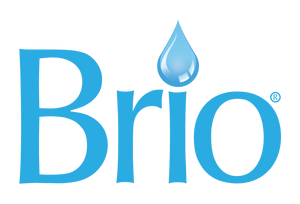Want a filter cooler or filtration system, but can’t decide between reverse osmosis (RO) or ultrafiltration (UF)? What’s the difference anyway? Well, both processes are effective at significantly reducing impurities in water, but what they reduce and the way that they do it are not quite the same.

The biggest difference between reverse osmosis and ultrafiltration is that reverse osmosis can significantly reduce total dissolved solids (TDS) from your water, whereas ultrafiltration only blocks solid particulates.
However, there are other distinctions between ultrafiltration and reverse osmosis, and understanding them can help you make an informed decision on the most suitable water filtration system for your home. Here we lay out which is best for you: ultrafiltration vs. reverse osmosis.
What is ultrafiltration?
Ultrafiltration is a barrier method of filtration and is typically the third stage in a 4-stage process. It’s often used as a pre-treatment step for reverse osmosis to reduce the load on the reverse osmosis membrane, as well as a filtration method in its own right.
How does ultrafiltration work?
After prefiltration by a sediment and pre-carbon filter, incoming water enters the ultrafiltration cartridge, which consists of a membrane perforated with pores 0.1 microns in diameter.

The water flows through the pores, and anything larger than 0.1 microns is blocked from moving on to the final stage of filtration and then to a dedicated faucet at the sink.
Notably, ultrafiltration filters out solid particulates only, not TDS.
Which water contaminants does ultrafiltration remove?
Ultrafiltration effectively intercepts bacteria, viruses, and some larger molecules, making it suitable for improving the microbiological quality of water. Read about the top contaminants and chemicals found in U.S. tap water.

Here are some of the most common contaminants that ultrafiltration filters out:
- Bacteria
- Copper
- Cysts (parasites, bacteria, and other microorganisms)
- Lead
- Pharmaceuticals
- Protozoa (one-celled parasites)
- Viruses
Ultrafiltration: set-up and maintenance
Set-up is quick and easy with ultrafiltration. No wastewater is created, so there’s no hole for a wastewater line that needs to be drilled.
The ultrafiltration filter needs to be changed every six to 12 months, depending on use and your home’s water quality, and works very efficiently, even under low water pressure conditions.
Brio’s 4-stage ultrafiltration bottleless cooler

Brio 4-stage ultrafiltration bottleless coolers are perfect for home or office. Sediment, pre-carbon, ultrafiltration, and post-carbon filters reduce contaminants, leaving your water looking and tasting great.
- Personalize your hydration: with a choice of hot, cold or ambient water whenever you want.
- Automatic cleaning: ensures water and tanks are free from biofilm and other natural contaminants.
- No more spills: softly illuminated night light makes dispensing in the dark easy and spill-free.
What is reverse osmosis?
Like ultrafiltration, reverse osmosis is a barrier method of filtration and the third stage in a 4-stage process. It’s often used for purifying drinking water and is commonly found in undersink or whole-house water filtration systems. Take a deeper dive into reverse osmosis filtration.
How does reverse osmosis work?
Reverse osmosis leverages natural osmosis by exerting pressure on the incoming water and forcing it the other way through a membrane with pores 0.0001 microns in diameter.

Contaminated water is removed through a wastewater line connected to undersink plumbing, while the purified water moves on to the final stage of filtration.
Notably, reverse osmosis not only reduces solid particulates, but also significantly reduces TDS (total dissolved solids) – in both cases by 99.97%.
Which water contaminants does reverse osmosis filter out?
Reverse osmosis is highly effective at blocking a wide range of contaminants, including dissolved salts, minerals, heavy metals, bacteria, viruses, and other impurities. Read about the top contaminants and chemicals found in U.S. tap water.

Here are just some of the contaminants it can block:
- Arsenic
- Bacteria
- Calcium
- Copper
- Cysts (parasites, bacteria, and other microorganisms)
- Fluoride
- Lead
- Magnesium
- Nitrates
- PFAS or “forever” chemicals
- Pharmaceuticals
- Protozoa (one-celled parasites)
- Sulfates
- TDS, like chloride, salts/sodium, and potassium
- Viruses
Only reverse osmosis filtration removes both “wanted” and “unwanted” minerals during the filtration process.
To add the “wanted” minerals back to the water, you can install undersink reverse osmosis systems equipped with remineralization filters, like our PURE RO systems.

Reverse osmosis: set-up and maintenance
Setting up a reverse osmosis system takes a little more effort than an ultrafiltration system. Reverse osmosis produces wastewater so it requires a wastewater line that must be connected to a drainpipe via a drilled hole. This is fine if you’re a homeowner, but if you rent, you’ll need permission from your landlord before drilling into a pipe.
Options for dealing with wastewater without having to drill a pipe include collecting it in a bucket and either pouring it down a drain, or reusing it. It’s something to think about, but depending on your situation, it may be more hassle than it’s worth.
And whether you or your landlord pays the water bill, please note that a typical tank undersink reverse osmosis system has something like a 1:4 ratio. That means for every one cup of pure water dispensed, four cups of wastewater are sent down the drain. This will impact water bills.
Concerned about reverse osmosis wastewater?
The Brio G20-U Reverse Osmosis Undersink Filtration System offers a compelling 2:1 purified-to-wastewater ratio. For every two cups of purified water dispensed, only one cup of wastewater is routed down the drain.
Depending on the quality of the source water, the reverse osmosis filter needs to be changed every 12 months or so. And unlike ultrafiltration, a reverse osmosis filter needs optimal water pressure to do its job effectively.
Brio’s reverse osmosis options
1. Brio tankless reverse osmosis systems
Brio tankless filtration reverse osmosis systems provide powerful filtration and premium hydration.
- Smart faucet: a built-in meter displays readings of TDS in your reverse osmosis water as it dispenses, while filter life indicators alert you when it’s time to replace filters.
- Convenient and compact: as soon as you set your system up, you can start dispensing fresh, filtered water – no waiting for a water tank to fill. Plus the unit’s small footprint preserves plenty of storage space.
- Powerful: 4-in-2 filtration blocks dirt, rust, and chlorine, with 0.0001-micron reverse osmosis membrane intercepting heavy metals like lead and arsenic and TDS, delivering pure, clear, odor-free water.

2. Brio reverse osmosis undersink systems
Brio reverse osmosis undersink water filtration systems are compact, with a holding tank that protects purified water until you’re ready to pour, and a dedicated faucet. They’re also easy to set up and require no electrical hookup. A 6-stage process reduces contaminants and restores minerals.
- Infused with minerals: restores acidic reverse osmosis-purified water to a pH of 7-7.5, resulting in fresh, silky soft hydration.
- Space-saving design: designed to fit neatly inside standard undersink cabinets, leaving plenty of room for storage.
- Versatile: with a dedicated faucet that dispenses only purified water, cook and hydrate with confidence.
3. Brio 4-stage reverse osmosis water dispensers

Perfect for home or office, Brio 4-stage reverse osmosis coolers provide perfect purified water on demand. Enjoy 4-stage reverse osmosis filtration, a bright night light, tri-temperature dispensing, and self-cleaning technology.
- Sustainable: bottleless design means you can kick that single-use plastic bottle habit to the curb.
- Convenient: connect your cooler to a water line and dispense limitless clarified water
- Save with every sip: switching from bottled water to home water filtration is one of the fastest, easiest and most impactful steps to live healthy and save money. Home water purification is by far the most economical and effective way of producing high quality, healthy water.

Ultrafiltration vs. reverse osmosis: which one is right for you?
Choosing between ultrafiltration and reverse osmosis is reminiscent of the old real estate adage: location, location, location. Here are some things to get you thinking:
Do you rent or own?
Ultrafiltration doesn’t require any drilled holes, so most likely no landlord approval is needed (but do check your lease).
Do you live in a rural area with farm runoff that contains nitrates and nitrites?
Only reverse osmosis can take out these harmful TDS.

Do you live in a rural or desert area with naturally high levels of arsenic?
Again, only reverse osmosis blocks arsenic.
Do you live in a city or suburban community with a great municipal water supply but aging lead pipes?
Ultrafiltration is the perfect solution for removing bacteria and lead.

Is white scale wreaking havoc on your plumbing that’s requiring expensive repairs?
White scale is caused by calcium and magnesium, which are TDS. Again, reverse osmosis comes to the rescue on this one.
Both ultrafiltration and reverse osmosis are powerful water filtration methods, and the choice between them depends on your specific water quality needs, water usage preferences, and budget. If microbiological contaminants are the primary concern, ultrafiltration might be adequate. If you seek comprehensive water purification, especially for drinking water, reverse osmosis may be the preferred choice. Whatever you choose, it’s comforting to know Brio offers both excellent filtration systems that will result in reassuringly clean, fresh water.




